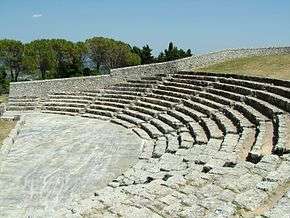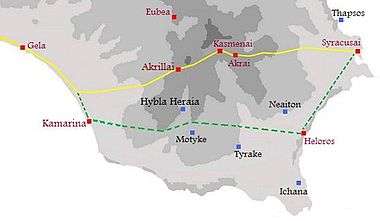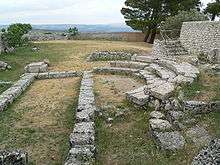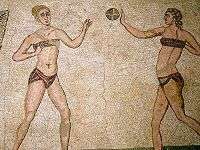Akrai
 The Greek theatre | |
 Shown within Italy | |
| Alternate name | Akrae |
|---|---|
| Location | Palazzolo Acreide, Italy |
| Coordinates | 37°3′28.6″N 14°53′42.21″E / 37.057944°N 14.8950583°ECoordinates: 37°3′28.6″N 14°53′42.21″E / 37.057944°N 14.8950583°E |
| Type | Settlement |
| History | |
| Founded | 663 BC |
| Abandoned | Approximately 827 AD |
| Periods | Archaic Greek to Byzantine period |
| Cultures | Ancient Greece |


Akrai was a Greek colony founded in Sicily by the Syracusans in 663 BC. It was located near the modern Palazzolo Acreide.
History
Akrai was among the first colonies of Syracuse founded by Corinthian colonists arriving in Sicilian territory. It was on the road to Gela, along with the Pantalica, Kasmene (military outpost on Monte Lauro), Akrillai and Camarina (the most distant of the colonies, founded 598 BC). Akrai and Kasmene were founded by the Syracusans: Akrai, seventy years after Syracuse, Kasmenae about twenty years later (c.640 BC). The original colonisation of Kamarina is attributed to the Syracusans, around a hundred and thirty years after the foundation of Syracuse; the founders were called Daskon and Menekolos.[1]
Constructed on the peak of a hill, Akrai was difficult to attack and at the time of its construction an ideal point for watching the surrounding territory. Thanks to the importance of its strategic position, the city achieved great prosperity, peaking during the reign of Hieron II (275 - 215 BC). Loyal to Syracuse, it nevertheless had its own political life with administrative and military autonomy. Notably, its army intercepted the invasion force of Nicias in the Val di Noto or Anapo uin 421 BC, contributing to his defeat.
In 211 BC, after the fall of Syracuse, it became part of the Roman province, being known in Latin as Acre. The city continued to be under Roman rule into the Byzantine period.
Excavations
The community was completely destroyed by the Arabs in 827 and the abandoned city was slowly covered over by soil and vegetation, remaining hidden from view and forgotten for almost eight hundred years. One of the first scholars to identify the site of the lost city was the Sicilian scholar Tommaso Fazello (1498 – 1570). Subsequently others showed interest in the site, especially the Palazzolan baron Gabriele Judica, who undertook the first archaeological excavations at the site in the early nineteenth century and described his findings in the book Le antichità di Acre (The Antiquities of Akrai), published in 1819.
Later excavations of the archaic city have revealed a theatre which is small but veruy well preserved. From later periods there are two latomiae (stone quarries) from the mid fourth century, known as Intagliata and Intagliatella (Carved cave and Little carved cave). On the flat area above Intagliata are the foundation stones of the Aphrodision, the temple of Aphrodite, erected in the sixth century BC.
At the western end of the site is the Bouleuterion, where the city council met. East of the hill are the Feral Temples, dedicated to the cult of the dead.
See also
| Wikimedia Commons has media related to Akrai. |
- I Santoni
- Theatre of Akrai
Notes
- ↑ Thucydides, Peloponnesian War, 6.5
External links
- What are portals?
- List of portals
- Featured portals


